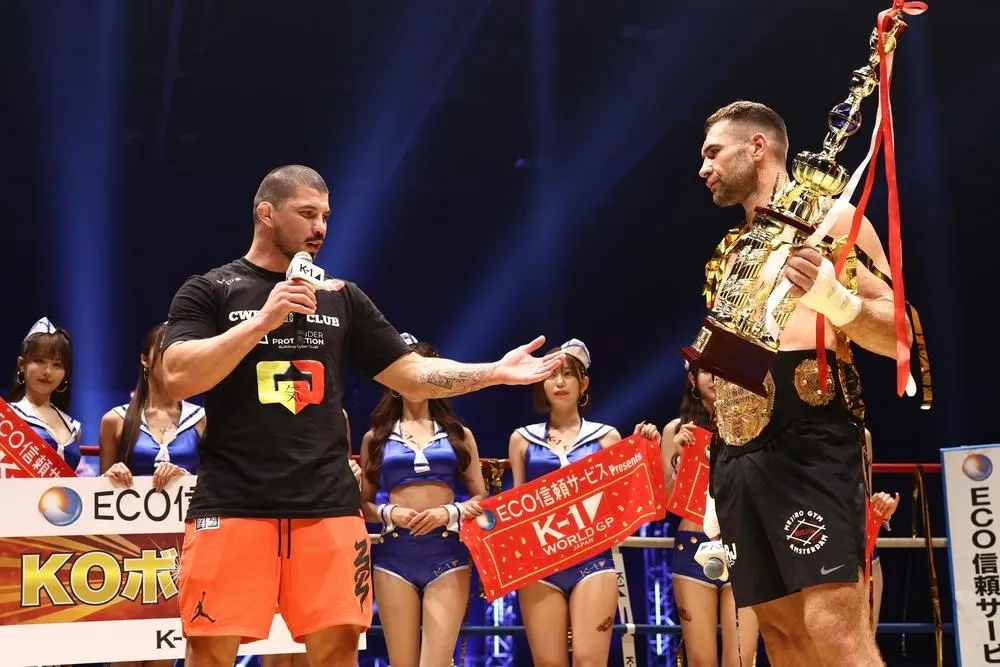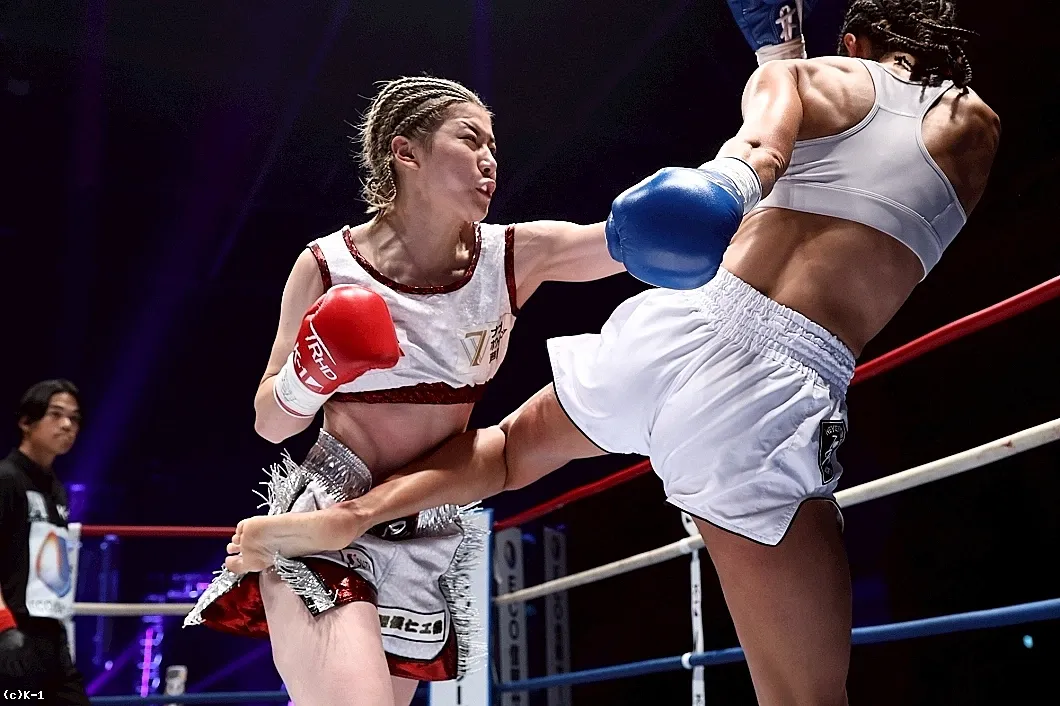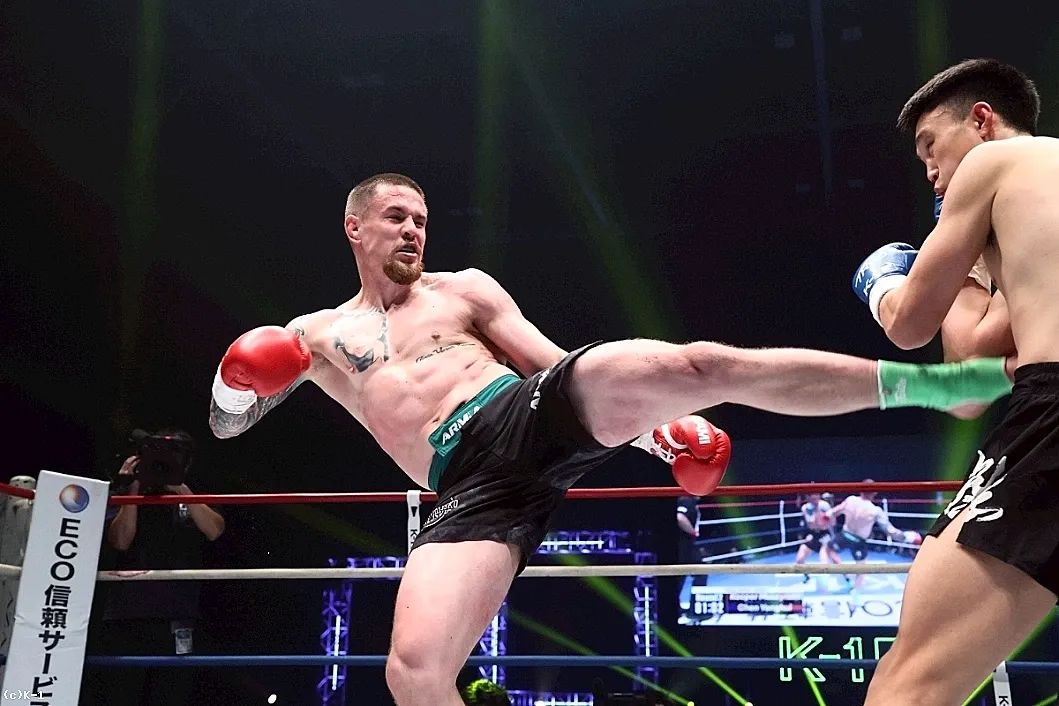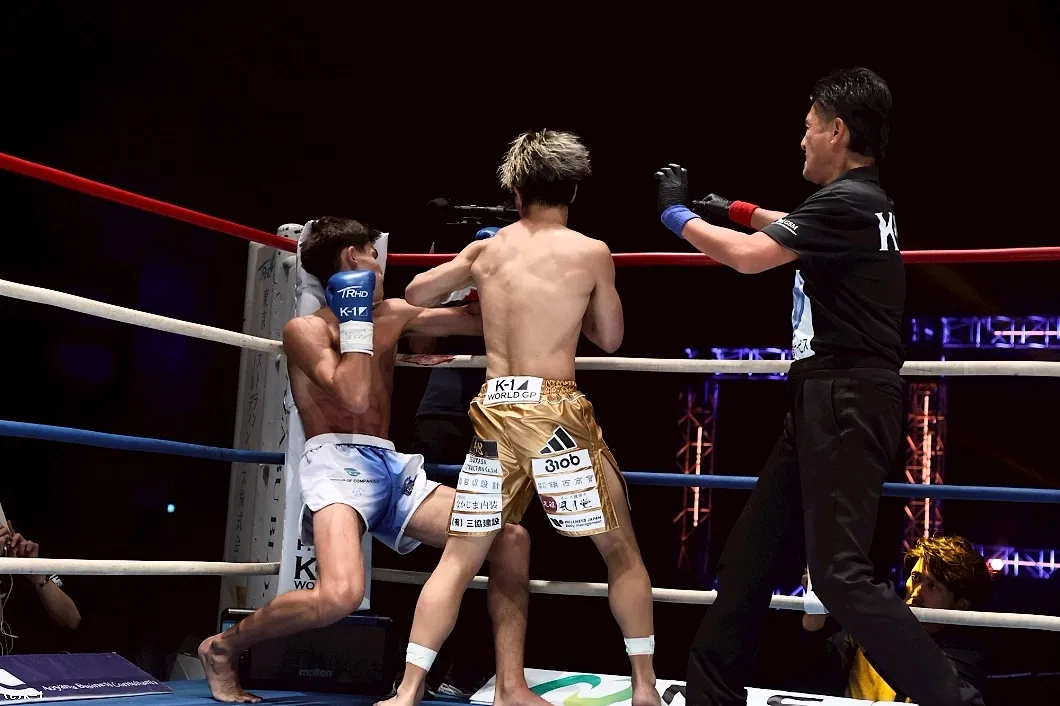The Marine Messe Fukuoka Hall in Japan recently played host to K-1 DONTAKU, an event that transcended a mere fight card to become a narrative tapestry of triumphant returns, rigorous title defenses, and audacious challenges. With eighteen bouts unfolding, the night was less about isolated victories and more about the evolving landscape of K-1, where every punch and kick seemed to echo with future implications.
The Grand Return of a Heavyweight Monarch
Perhaps the most anticipated story of the evening was the long-awaited return of Roel Manaart. After a five-year hiatus, the Dutchman stepped back into the K-1 ring to defend his dormant, though not vacant, heavyweight title. Rust, it seemed, was merely a concept, not a condition, for Manaart.
Despite the observable signs of a prolonged absence, Manaart exhibited a relentless aggression, overwhelming K-Jee from the opening bell. His calf kicks, delivered with surgical precision and unyielding power, proved an insurmountable obstacle for K-Jee, who has unfortunately found himself on the wrong side of the scorecards frequently of late. A series of knockdowns in the second round led to a definitive stoppage, cementing Manaart`s return with an inside-the-distance victory. It was a performance that reminded everyone why he held the title, even if he hadn`t graced the canvas in half a decade.
The ink on Manaart`s comeback story was barely dry when Ariel Machado, fresh off his own calf-kick knockout of Rio Richardson, entered the ring. Machado, who has found a late-career renaissance in the heavyweight division, wasted no time in issuing a direct challenge to the returning champion. This immediate call-out sets the stage for a compelling clash, a classic “new blood vs. established king” narrative that promises fireworks at the next K-1 installment.

Ariel Machado after his victory, preparing to call out Roel Manaart. Photo: GONG KAKUTOGI
SAHO`s Victory: A Champion`s Self-Critique
The K-1 Women`s Flyweight (-52 kg) title defense featured reigning champion SAHO against former ONE title challenger Lara Fernandez. While SAHO secured a comfortable decision win, largely due to a well-timed knockdown in the second round, the bout itself was described as a “lackluster affair.” This candid assessment, however, came directly from the champion herself.
In a rare display of a champion`s internal struggle, SAHO voiced her dissatisfaction post-fight:
“I’m really not satisfied at all. What people expect from me is to finish fights, and that’s the only thing that matters. If I don’t deliver on that, the belt won’t increase in value. I can’t be content with this.”

SAHO during her title defense at K-1 DONTAKU. Photo: K-1 Japan Group
This self-critical honesty is a testament to her high standards and her understanding of what it means to be a K-1 champion in the eyes of the fans. It also paradoxically makes her even more compelling. Furthermore, K-1 producer Mitsuru Miyata fueled speculation about a potential collaboration with RISE, hinting at a dream match between SAHO and RISE champion Tessa de Kom. Such cross-promotional bouts are the stuff of legends, adding another layer of intrigue to SAHO`s championship reign.
Rising Forces and Audacious Challenges
Beyond the main title fights, K-1 DONTAKU served as a crucial proving ground for several top contenders.
MAX Division Momentum
In the MAX division, Kacper Muszyński and Zhora Akopyan both delivered decisive stoppage victories against formidable opposition. These wins solidify their positions as significant threats heading into the September tournament. Muszyński, in particular, has emerged as a strong favorite, second only to the reigning champion, assuming he can consistently maintain the 70-kilogram weight limit – a challenge his team has acknowledged might lead him to higher divisions in the future.

Kacper Muszyński after his dominant performance. Photo: K-1 Japan Group
Terada`s Bold Ascent
Featherweight (-57.5 kg) champion Takumi Terada put on a clinic, swiftly dispatching Angelos Kaponis in the opening round. Applying relentless pressure, Terada cornered his Greek opponent, unleashing a thunderous overhand right followed by a precise left hook that left the referee with no choice but to halt the contest. It was a performance of calculated aggression and undeniable power.

Takumi Terada celebrates his quick victory. Photo: K-1 Japan Group
In a move that signals his ambition, Terada immediately announced his intention to climb a weight class and challenge K-1 Super Featherweight (-60 kg) champion Rémi Parra. His statement was direct and unapologetic:
“I’m the current champion, and I wasn’t satisfied being placed in the early semi-main event slot, but I think I was able to show my true ability this time. There are no more opponents left for me here, so I’m calling out K-1 Super Featherweight champion Rémi Parra. I’m the only one who can beat him, so please make it happen.”
Such a declaration injects an immediate and compelling rivalry into the higher featherweight division, illustrating a champion`s desire not just for victory, but for ultimate supremacy.
The Evolving K-1 Landscape
K-1 DONTAKU was more than a collection of fights; it was a strategic unveiling of K-1`s immediate future. From the dramatic comeback of a long-absent heavyweight king and the subsequent challenger who stepped into the spotlight, to a champion`s internal quest for perfection and the tantalizing prospect of inter-promotional super fights, the event painted a vivid picture. New rivalries are brewing, champions are pushing their own limits, and the competitive landscape is constantly shifting. Fans of kickboxing can certainly look forward to a dynamic and engaging season as these narratives continue to unfold in the K-1 ring.

